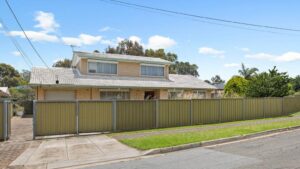
A recent report reveals that one in five Australian households are facing difficulties in paying their energy bills. The study, conducted by Energy Consumers Australia (ECA), highlights that renters are particularly affected, primarily due to the insufficient solar and insulation provisions in rental properties. The findings paint a concerning picture of energy hardship, with more than 10 percent of households spending over 6 percent of their income on energy costs.
The report comes on the heels of a price hike that impacted nearly 500,000 households in New South Wales, South-East Queensland, and South Australia on July 1, 2023. This increase followed a rise in the Default Market Offer, the reference price for electricity established by the Australian Energy Regulator.
For many Australians, the soaring energy costs have become a pressing issue, forcing them to choose between paying bills and maintaining essential utilities. Households earning below AU$50,000 annually are most likely to encounter energy hardship, with 54 percent of renters and 46 percent of mortgage holders experiencing financial strain. In contrast, among households earning at least AU$150,000, only 11 percent of renters and 6 percent of mortgage holders reported facing similar difficulties.
Urgent Action Required from Government and Energy Retailers
Liz Stephens, General Manager of Public Affairs and Strategy at ECA, emphasized the urgency for action from both energy retailers and the government. “Without decisive action, many Australians will continue to face unaffordable energy costs, unsafe living conditions, poor health outcomes, and sustained financial stress,” she stated. She pointed out that renters are disproportionately impacted by the rise in energy prices, noting that many rental homes in Australia have energy efficiency comparable to a tent.
The report highlights a stark disparity in access to energy-efficient features. Only 9 percent of renters have solar panels, compared to 41 percent of mortgage holders and 48 percent of outright homeowners. Additionally, about two-thirds of renters lack at least one form of insulation, such as ceiling insulation or double-glazed windows, while 64 percent of mortgage holders and 80 percent of homeowners possess these features.
The lack of investment in energy efficiency by landlords is a contributing factor to the crisis. According to the report, landlords often do not see a financial incentive to improve energy efficiency, while tenants may lack the means to retrofit properties they do not own. While jurisdictions like the ACT and Victoria have enacted enforceable minimum energy efficiency standards for rental homes, most states remain without such regulations.
Support Options Available for Struggling Households
The ECA report suggests that individuals struggling to pay their energy bills should first reach out to their energy provider. “Tell them you’re having a hard time and that you need support to pay your energy bill — you have a right to receive help,” Stephens advised. Energy providers are legally required to inform customers about better offers and must have residential customer hardship programs in place, which allow access to various payment options and assistance.
Sally Tindall, Data Insights Director at the comparison website Canstar, noted that millions of Australians might be paying more than necessary for their energy due to a lack of comparison shopping. “Switching from an average-priced plan to one of the lowest in the market could save a typical household up to AU$406 a year,” she said.
As energy prices continue to climb, the situation remains critical for many households across the nation. With both immediate support options and long-term solutions necessary, the call for reform in energy efficiency standards for rental properties grows louder.






